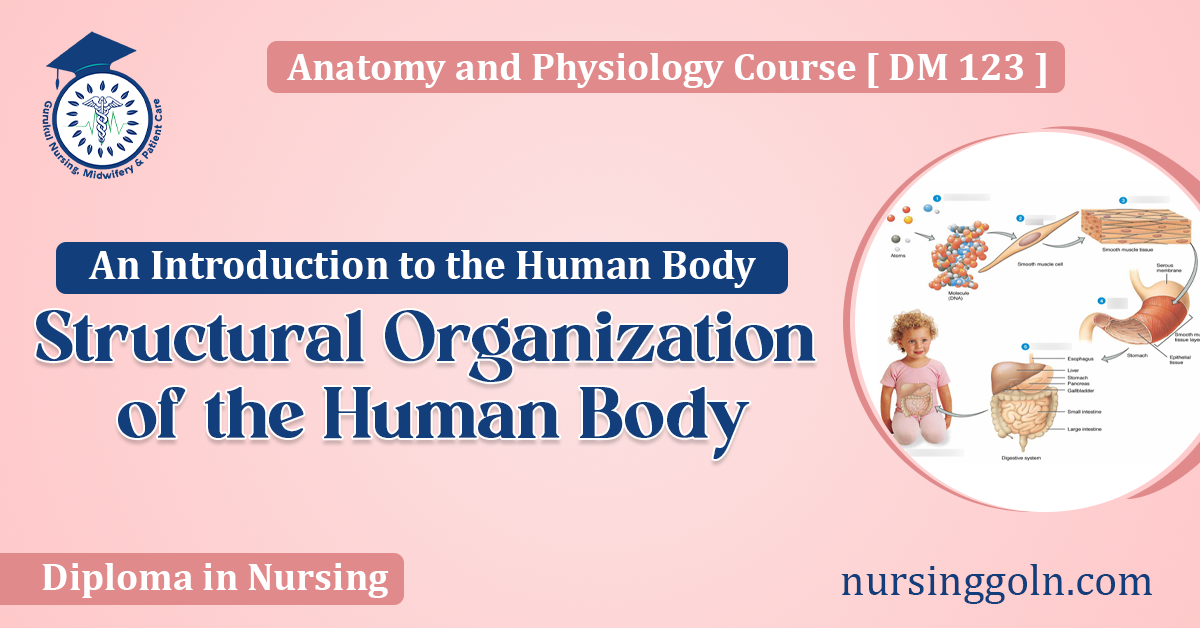The human body is an intricately woven tapestry of structures and functions, evolved over millions of years to be both adaptive and efficient. As we delve into the layers of this biological marvel, we find a hierarchical organization that builds upon simpler structures to form complex systems. This article will explore the structural organization of the human body, from the smallest unit, the cell, to the vast interconnected system that makes us a functioning whole.

1. Levels of Structural Organization
At a basic level, the human body can be broken down into six primary levels of structural organization:
- Chemical
- Cellular
- Tissue
- Organ
- Organ system
- Organismal
1.1 Chemical Level
Starting at the most rudimentary level, the chemical level focuses on the atoms and molecules essential to life. Atoms such as carbon, hydrogen, oxygen, and nitrogen combine to form molecules. These molecules then combine to create larger structures like proteins, carbohydrates, lipids, and nucleic acids. These bio-molecules are the building blocks and functional units of the cells, providing the framework and functionality that sustain life.
1.2 Cellular Level
As we move up the ladder, atoms and molecules come together to form the basic unit of life: the cell. Cells are incredibly diverse in function, ranging from nerve cells that transmit signals to muscle cells that enable movement. Despite this diversity, every cell has a similar structural basis – a nucleus surrounded by the cytoplasm and enveloped by a cell membrane.
1.3 Tissue Level
When similar cells come together to perform a common function, they form a tissue. The human body comprises four main types of tissues:
- Epithelial Tissue: This tissue covers body surfaces and lines hollow organs, cavities, and ducts. They protect, secrete, absorb, and excrete substances.
- Connective Tissue: As the name suggests, this tissue connects, binds, or separates other tissues or organs. It includes bone, cartilage, fat, and blood.
- Muscle Tissue: Divided into skeletal, cardiac, and smooth muscle tissues, this tissue is responsible for producing movement.
- Nervous Tissue: Comprising neurons, this tissue detects changes in the internal and external environment and responds by generating nerve impulses.
1.4 Organ Level
When different types of tissues come together to perform a specific function, they form an organ. A classic example is the stomach. It has an outer lining of muscle tissue (allowing it to churn food), an inner lining of epithelial tissue (to secrete gastric juices), and connective tissue to hold everything together.
1.5 Organ System Level
Organs don’t work in isolation. They often come together in coordinated systems to ensure the body functions seamlessly. For example, the heart and blood vessels come together to form the cardiovascular system, ensuring oxygen-rich blood circulates throughout the body.
1.6 Organismal Level
The highest level of organization, the organismal level, is the sum total of all the structural levels working in coordination. This holistic view is what we recognize as a human being.

2. Major Organ Systems
The human body is made up of 11 primary organ systems:
- Integumentary System: Comprising the skin, hair, and nails, this system offers protection, regulates temperature, and provides sensory information.
- Skeletal System: This system supports and protects the body while also providing a framework for the muscles to cause movement. It’s made up of bones and joints.
- Muscular System: As mentioned, muscles are responsible for movement. They also help in posture and producing body heat.
- Nervous System: The brain, spinal cord, and nerves are the chief components. This system controls body responses to changes in the internal and external environment.
- Endocrine System: Through glands that produce hormones, this system influences growth, metabolism, and reproduction.
- Cardiovascular System: Comprising the heart and blood vessels, it circulates blood throughout the body.
- Lymphatic System: This system returns leaked fluid to the blood vessels and filters out pathogens.
- Respiratory System: Through the lungs and associated pathways, this system ensures oxygen enters the body and carbon dioxide is expelled.
- Digestive System: From the mouth to the large intestine, this system breaks down food into absorbable units and expels waste.
- Urinary System: The kidneys, bladder, and associated ducts help eliminate waste from the body and regulate water balance.
- Reproductive System: This system ensures the production of offspring. The structures vary between males (testes, penis) and females (ovaries, uterus).

3. Homeostasis: The Balance Within
One of the primary roles of the body’s structural organization is to maintain a state of balance, or homeostasis. This balance ensures the body’s internal environment remains consistent, even when external conditions change. Organ systems work in tandem to adjust to internal and external stimuli, ensuring that critical parameters like pH, temperature, and nutrient levels remain within a narrow, optimal range.

The human body’s structural organization is a marvel of evolutionary engineering. From the minuscule atoms to the intricate organ systems, every component plays a pivotal role in keeping us alive and well. This vast web of interconnected structures not only serves as a testament to the complexity of life but also underscores the importance of each level in maintaining the body’s overall health and function. By understanding these structures, we can better appreciate the wonder that is the human body and the intricate balance that keeps us going every day.
See more:
